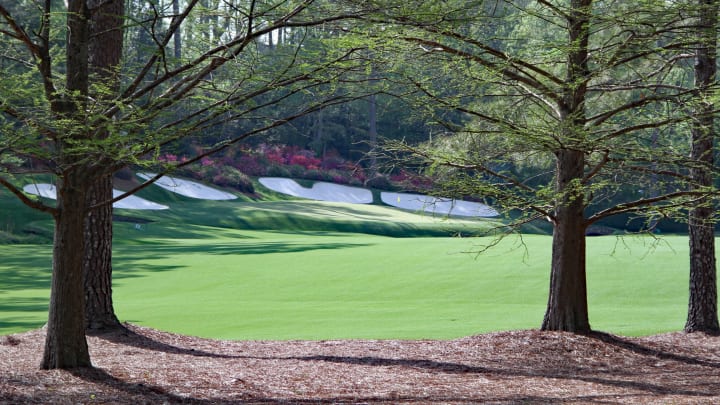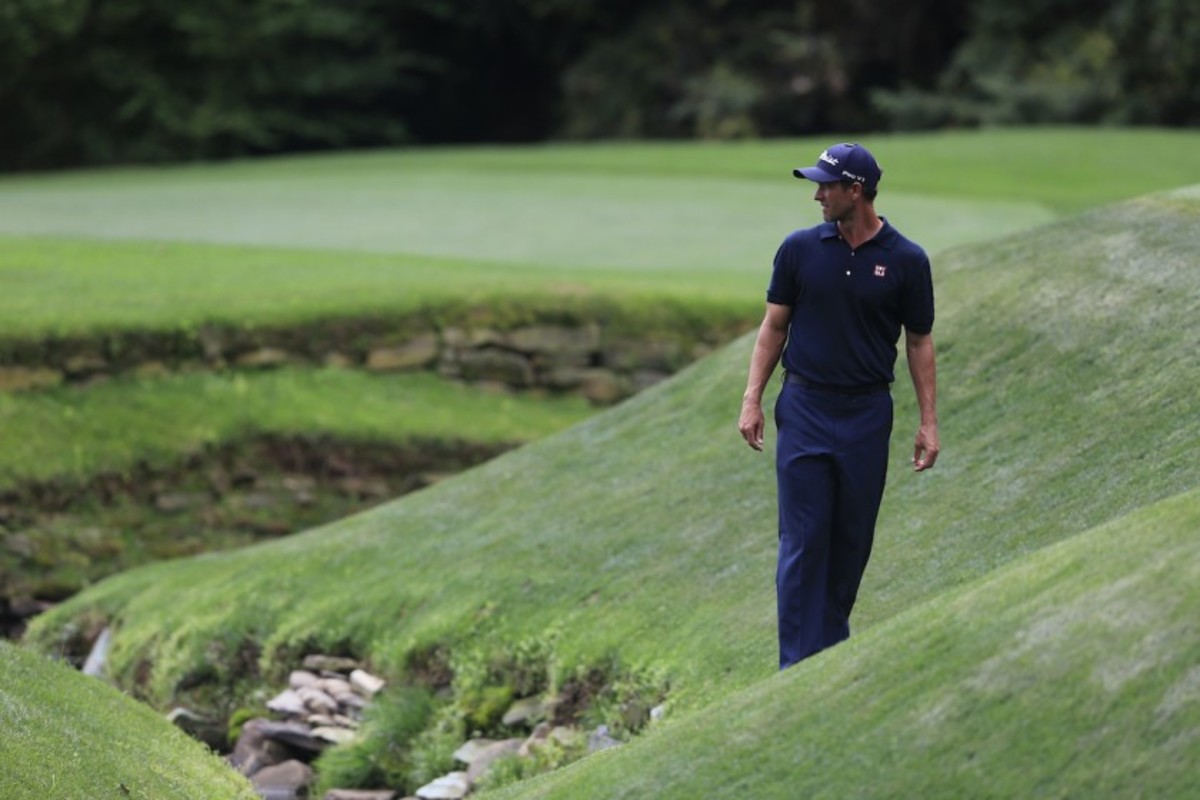Masters 13th Hole: Stats, History, Memorable Moments From Augusta National’s par-5 ‘Azalea’

A closer look at Augusta National Golf Club's 13th hole for this year’s Masters:
Name: Azalea
Par: 5
2021 yardage: 510
1934 yardage: 480
2021 scoring average: 4.62
All-time scoring average: 4.77
All-time difficulty rank: 18
Lowest year: 4.47 (2019)
Highest year: 5.04 (1976)
THE LAYOUT: AUGUSTA NATIONAL'S 13TH HOLE
Easily one of Augusta National’s prettiest holes, with the combination of lush green grass, colorful azaleas and magnolias, and bleach-white sand bunkers serving as a backdrop to the green. The dogleg-left hole’s fairway rises slightly at the bend, then banks left toward the green. The ideal play for players contemplating reaching the green in two is along the left fairway. The risk is being errant left because of a heavily wooded tree line and a Rae’s Creek tributary that runs along the fairway’s length before jutting right across the green’s front and up its right. Tee shots right are safe from the brook and woods, but make going for the green in two more difficult. Tall pines and their needles come into play on shots wayward right. The green is rectangular in size, runs uphill from front to back, slopes left to right and features a ridge to navigate near the back. Four backside bunkers come into play often because of balls hitting the firm green and bouncing in.
How to play the hole is best summarized by Masters founder Bobby Jones, who in 1959 said: “In my opinion this 13th hole is one of the finest holes for competitive play I have ever seen. The player is first tempted to dare the creek on his tee shot by playing in close to the corner, because if he attains this position he has not only shortened the hole but obtained a more level lie for his second shot. Driving out to the right not only increases the length of the second, but encounters an annoying sidehill lie. The second shot as well entails a momentous decision whether or not to try for the green. A player who dares the creek on either the first or second shot may very easily encounter a 6 or 7 on this hole. Yet the reward of successful, bold play is enticing.”
RELATED: Illuminating the Masters' 13th hole
SIGNIFICANT CHANGES AT AUGUSTA NATIONAL'S 13TH HOLE
1954: Contours of green changed and bunker re-arranged.
1958: Byron Nelson Bridge dedicated.
1967: Masters tees extended forward 5 yards.
1974: Masters tees extended to rear 5 yards.
1975: Masters tees extended to rear 7 yards. Green rebuilt and re-contoured.
1988: Swales to left and rear of green moderated.
1994: First permanent air system installed at green.
1995: Creek in front of green modified.
2002: Masters tees moved back 20-25 yards.
2010: Seven yards added to the front of the Masters tees without necessitating a change in length to the hole.
Notes: After touring the property with Bobby Jones in 1931, course architect Alister Mackenzie believed that all the 13th was missing was a tee and a green. And though there have been 10 significant changes to the hole, most have been gains in yardage.

MASTERS MOMENTS
The 13th hole’s tee shot marks the end of Amen Corner, which was coined by Herbert Warren Wind in his recount of the 1958 Masters for Sports Illustrated. … A strong argument could be made that Jimmy Demaret won the 1950 Masters with his play at the 13th. His four-round scorecard on the par-5 hole read 4-3-3-4 — or 6 under par. Demaret won with a 5-under 283 score. ... The Byron Nelson Bridge near the tee recognizes the Texan’s 1937 final-round accomplishment on the hole. Having birdied the par-3 12th, Nelson made eagle at the 13th. His two-hole score of 5 allowed Nelson to make up six shots on Ralph Guldahl, who played the two holes in 11. ... Jeff Maggert (1994) made the hole’s only double eagle in competition; Tommy Nakajima (1978) holds the highest score, 13.
In 1954, aggressive long knocker Billy Joe Patton was looking to make Masters history by becoming the first amateur to win the major. When he stepped to the 13th tee on Sunday afternoon, Patton was was tied with legends Sam Snead and Ben Hogan. The par-5 hole was playing 475 yards, and considering Patton won the driving contest with a belt of 338 yards just days earlier, the hole was ripe for reaching the green in two, especially after a near-perfect drive down the fairway’s left side. While Patton had no doubt about going for the green in two, he was torn between a 2-iron and 4-wood for his approach. He chose the 4-wood and aimed directly for the flagstick. “It wasn’t that bad a golf shot. In fact, it was one of the best I’ve ever hit, only it drifted right on me,” he said. The ball flew offline to the right, landed in the fringe, bounced onto the apron and then rolled down the bank and into the shallow water. Patton removed his shoes to assess his watery lie. He chose to take a drop, then hit into the fringe, onto the green and two-putted from 6 feet for a double-bogey 7. Patton ultimately finished third, a shot out of a playoff between Snead and Hogan, which Snead won the next day.
In 1994, Ben Crenshaw thought of Patton’s hiccup and opted not to play the hole so aggressively. He made par and moved on, and ultimately won. … Clifford Roberts wrote in The Story of the Augusta National Golf Club that more than “1,600 azaleas of all major horticultural types” flank the hole’s south side. … The hole has been played in 6 under for the week nine times and 5 over six times. …
MASTERS MEMORY
2010: Most of the hole’s stories about triumph or tragedy involve the hole’s left side. So perhaps it’s fitting that a left-hander figures into one of the most fabled shots from the right side. In the Masters’ final round, Phil Mickelson, owner of two green jackets already, pulled his tee shot into the pine straw and behind two trees. A window smaller than Mickelson’s frame presented itself, and a layup wedge while holding a two-stroke lead over playing partner Lee Westwood appeared to be the high-percentage play. But we’re talking about Mickelson, who opted for a 6-iron that was cleanly struck, cleared the brook and stopped 5 feet from the hole. Mickelson settled for birdie and went on to win his third Masters title.
SEE MORE OF AUGUSTA NATIONAL'S BACK NINE
10 | 11 | 12 | 13 | 14 | 15 | 16 | 17 | 18
